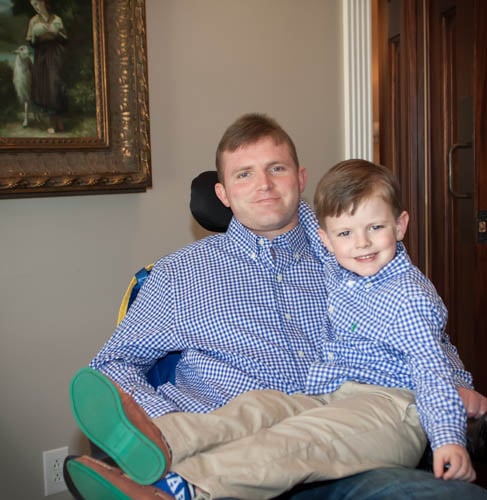Summarize This Article:
Summarize This Article:

Nick Andrade was a 17-year-old competitive swimmer when he took a vacation trip to Brazil, where he has relatives. It was there that Nick dove into shallow water and suffered a spinal cord injury, leaving him paralyzed from the neck down and on a ventilator.
Eventually, when he was told he would never be able to breathe on his own, forever connected to a ventilator, Nick did not want to go on; he had lost all hope. Ultimately, he was referred to Dr. Matthew Kaufman of The Institute for Advanced Reconstruction by Dr. Wise Young, director of the W.M. Keck Center for Collaborative Neuroscience and a professor at Rutgers University, New Jersey. In July 2013, Nick underwent specialized surgery with Dr. Kaufman, including nerve grafting and implantation of a breathing pacemaker device. Today, the now 19-year-old Charlotte, North Carolina resident is starting to breathe on his own and is weaning off the use of the ventilator. Dr. Kaufman has been performing these surgeries on spinal cord-injured patients in both New Jersey and at the University of California Los Angeles for the past seven years. Currently, as Nick progresses, his physicians are in close contact with Dr. Kaufman and his team.
Breathing pacemakers provide respiratory function superior to mechanical ventilators since the inhaled air is drawn into the lungs by the diaphragm under negative pressure rather than being forced into the chest under positive pressure. This is physiologically more accurate and comfortable for the patient.
Pacing patients are also at much lower risk of upper airway infections, including ventilator-associated pneumonia (VAP). Breathing pacemakers are small and do not require the bulky tubing and batteries of mechanical ventilators, so the patient’s mobility is greatly enhanced. Breathing pacemakers can be implanted using a variety of minimally-invasive surgical approaches.
Nick Andrade’s progress is the source of great personal joy for him and his family. According to the homepage of his website, “Due in large part to the generosity & support of the community, Nicholas has made great strides in weaning off the ventilator. Now Nicholas is able to breathe for up to 3 hours on his own, and we are hopeful that he will be off the ventilator before the summer.”
Making news, a new February 2014 study published in the Journal of Trauma Acute Care Surgery finds that diaphragm pacing (DP) stimulation in spinal cord-injured patients is successful not only in weaning patients from mechanical ventilators but also in bridging patients to independent respiration, where they could breathe on their own without the aid of a ventilator or stimulation.
Dr. Matthew Kaufman has published numerous articles on this topic in the medical literature and has been a presenter at several national and international medical conferences, including more recently in Hawaii and Vienna, Austria. On Saturday, May 17th, Dr. Kaufman will present at the 40th annual American Spinal Injury Association (ASIA) 2014 Annual Scientific Meeting in San Antonio, Texas. His topic will be “Successful Reversal of Ventilator Dependency in Cervical Spinal Cord Injury and Stroke With Combined Upper Motor Neuron and Phrenic Nerve Lesions Using Simultaneous Nerve Transfers and Diaphragmatic Pacemakers.”
